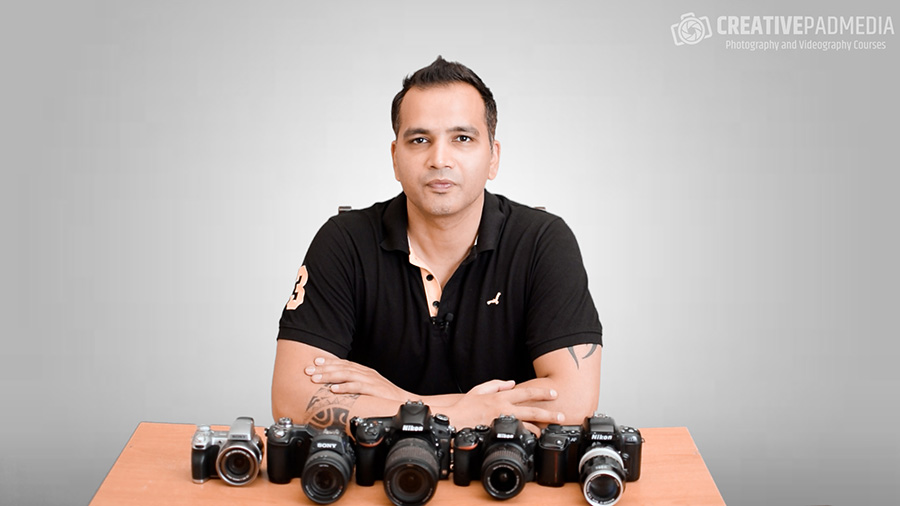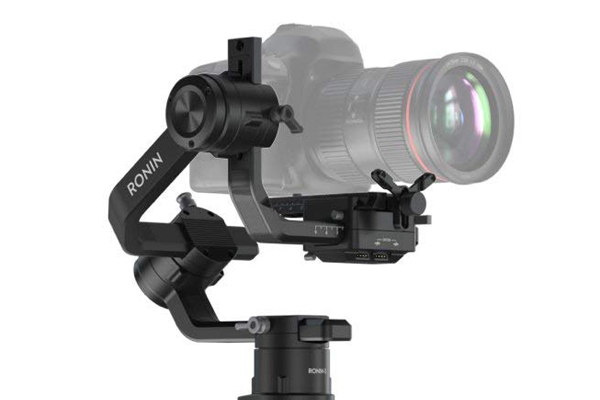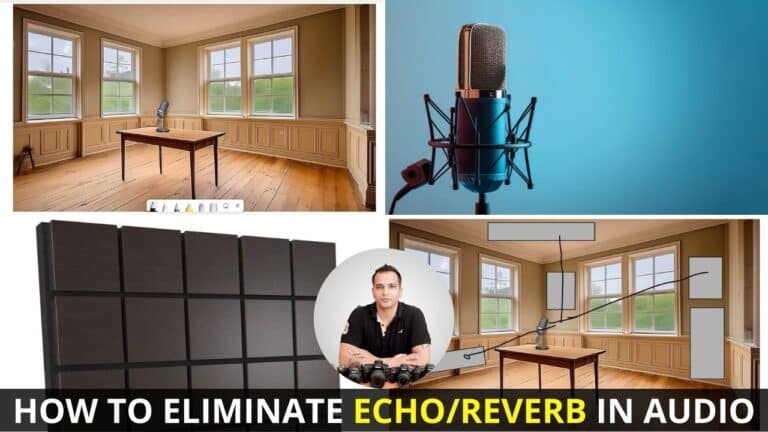5 Tips to Make Your Online Course Video Creation Process Efficient
If you’re an online coach, you would know by now that the time for online courses in the form of written or audible content is well past us.
This is the era of videos.
There is no doubt about the fact that your online courses have to be video-based in order for them to perform really well in the market.
Creating videos is something that can seem very daunting at first.
I know this because when I created my first proper video based photography online course back in 2018, I had no idea where to start.
I did this video production course by Phil Ebiner on Udemy and it had a huge impact on me because 4 months after doing this course, I was able to create a 6 hour long 45 videos course of my own. That started the whole process for me and currently I have 20 courses on Udemy which have been downloaded in over 150 countries.
While creating these courses, I have learned a lot about video production, especially from the point of view of creating education-based videos.
Here are the 5 most important things I have learned:
1. Always take the easiest way out by creating videos of “bare minimum level” quality
There are two main ways to create videos –
- Recording videos from a device like a camera or a phone
- Screen Recording/Screen Casting
Here is the thing. The first method is tougher because you really have to learn how to get the settings right in your device, whether that be a DSLR, Mirrorless, Point and Shoot or even a phone camera.
It takes a while to learn this process and get good at it.
The second method (Screen Recording) is the easier approach that even a complete beginner can use to create training videos quickly.
As the name suggests, Screen Recording refers to recording your laptop/desktop screen.
This is often easier because all it involves is using a screen recording software and a mic to record your voice. That’s it. You don’t even have to come in the video (though you can by using a webcam overlay, a feature present in the screen recording software).
The catch here is that screen recording can mainly be done when your training videos are of the nature where you are speaking and showing something on the screen, like a presentation, software demonstration, etc.
For example, if you are a Yoga teacher, you probably won’t find screen recording very effective since you will have to record videos where you are actually showing the Yoga poses. In these cases you will have to use a camera.
But for some niches, only screen recording is enough. This is true for niches where the trainer is mainly imparting knowledge. For instance, an online course on stock trading will mainly be have to made by showing things on a computer. So screen recording will be sufficient.
So ask yourself – Can my online course be made in such a way that I can only use screen recording?
If the answer is Yes, then you’ll know that your job will be way easier. You can also go through some of the resources that I will be mentioning below which will help you in learning the process of screen recording.
But if the answer is No and you know you will have to use a camera too, then also ask yourself –
- What’s the bare minimum video quality that my student will be satisfied with?
- Can I simply put a smartphone on a tripod, use a good quality mic and get started? Or will I have to really get good at videography?
Most of the times, as an online instructor, you will find that you just need to do the bare minimum. Because one privilege we online trainers have is that our students focus on the quality of our content, not that much on the cinematic quality of our videos.
We are instructors, not film-makers.
So take advantage of that and only shoot to the level which is the bare minimum.
By this I also don’t mean that you should create poor quality videos. There is a difference between doing the bare minimum and doing a poor job. What I mean is that as you keep creating videos, you will naturally get better at it and soon enough, creating high quality videos will become easier for you. But don’t wait for that moment to start creating videos.
Learn as you create should be the model.
Always remember, the most important thing as an online course creator is your content and the ability to create videos quickly. Finishing your online course and putting it out on the market always has to be the number one priority.
Here are some of the resources that can help you:
Which screen recording software do I use myself? You’ll find it here. You’ll also a find the link to my free screen recording tutorial on that page.
For screen recording, you will also need a mic and if you wish, a webcam. In the page that I gave the link to in the last sentence, you will also find the mic and webcam I use for my own screen recordings.
2. You don’t need to get everything right in one take
When I was starting out, I felt that I needed to shoot and get everything right in one take.
This was proving to be a big problem because what you will find is that you will often fumble and make mistakes when you are speaking.
Earlier what I used to do was that I would delete the video and start all over again.
This was proving to be very inefficient, challenging and frustrating. It started making me hate the process of creating videos.
The problem was that I was being a perfectionist.
So what is the solution?
The solution I found was to keep the video going even if I made a mistake. I would start speaking again from the part wherever I made a mistake and not start all over again. Then during editing I remove the part where I made a mistake.
Yes, your students will be able to notice a cut but trust me they will not mind a few cuts.
They are more focused on the quaity of your content.
But what this will do for you is that it will make you more confident and stress-free when you are creating videos. And this will ultimately enable you to create more videos in a shorter time.
Nowadays I only shoot the video all over again if I make a very major mistake. Otherwise I just keep the video going on and remove the faulty parts in editing.
3. Shoot the Intro video of your online course at the end
When creating an online course, a lot of instructors start off by shooting the intro video. It just seems logical.
I know I did.
But it’s a wrong strategy.
Because often times what will happen is that the remaining online course will not go according to what you had in mind.
As you create your online course, a lot of initial plans can go out of the window and you may find that you are adding things which you never thought of.
If the change is too significant, then that would render the Intro video deficient.
So it’s better to shoot all the videos which form the introduction to the course right at the end after you have finished shooting the entire course, to avoid having to shoot them all over again.
4. Get good with video editing
As mentioned in the point above, the main game of video making lies in the editing process.
Being a good video editor can make your life very easy because you will be able to correct a lot of mistakes that happened during the creation process.
Being good with editing also increases your productivity since you are able to quickly create the final output.
This means you have to pick a video editing software and get really good with it.
What the software is will depend on whether you want to pay for it or not.
I myself use Adobe Premiere Pro.
You can check out my following Udemy courses:
- DaVinci Resolve Video Editing Tutorial (Free software)
- Adobe Premiere Pro Video Editing Tutorial (Paid software)
5. Don’t write a full script
Writing full scripts is for perfectionists.
Don’t be a perfectionist.
Use bullet points and if the video is a complex one, you can create a more detailed outline.
But beyond that, rely on your skill to speak naturally.
Not only will you sound more natural, you will be able to create more videos in a shorter amount of time.
Also, you should plan things but don’t plan too much before starting. Otherwise you’ll find you keep procrastinating.
Let me give you an example.
In April 2019, I was about to start creating my Videography for Beginners Course. But it was just not happening.
There were some issues going on in my personal life and that was impacting things too.
Everyday I would sit down and plan the videos and write the script so I can start. But the planning phase was simply not getting over and things started to become really frustrating. I was just not able to start.
Then one fine day I just switched on the camera and I told myself – I will just start talking about some basics of video making and I don’t care if this video comes out to be perfect or not.
I did that and within the next half an hour, I created the first 3 videos of that course. No planning, no script. Just me talking.
There were some mistakes but I cut them out during video editing.
Those videos were not perfect but here’s the important thing – They got me going.
I had learned a long time back that motion creates emotion, not the other way round.
Once I knew I had made three videos, things just kicked in and I started to make the remanining videos with more accuracy and planning. This was possible because of the momentum I got. It took me more than month to finish shooting the entire course but I knew that it would not have been possible had I not made those “imperfect” videos on the first day.
Since then I’ve often used this imperfect approach for my other courses also and it always works.
So always remember, sometimes it’s perfectly fine to jump into action and start creating things.
Rest of the things start falling into place. That’s the magic of action.
Conclusion
You can see that the common thing about the points above is that I want you to avoid being a perfectionist.
Because that will always slow you down.
Always remember, easy does it.








